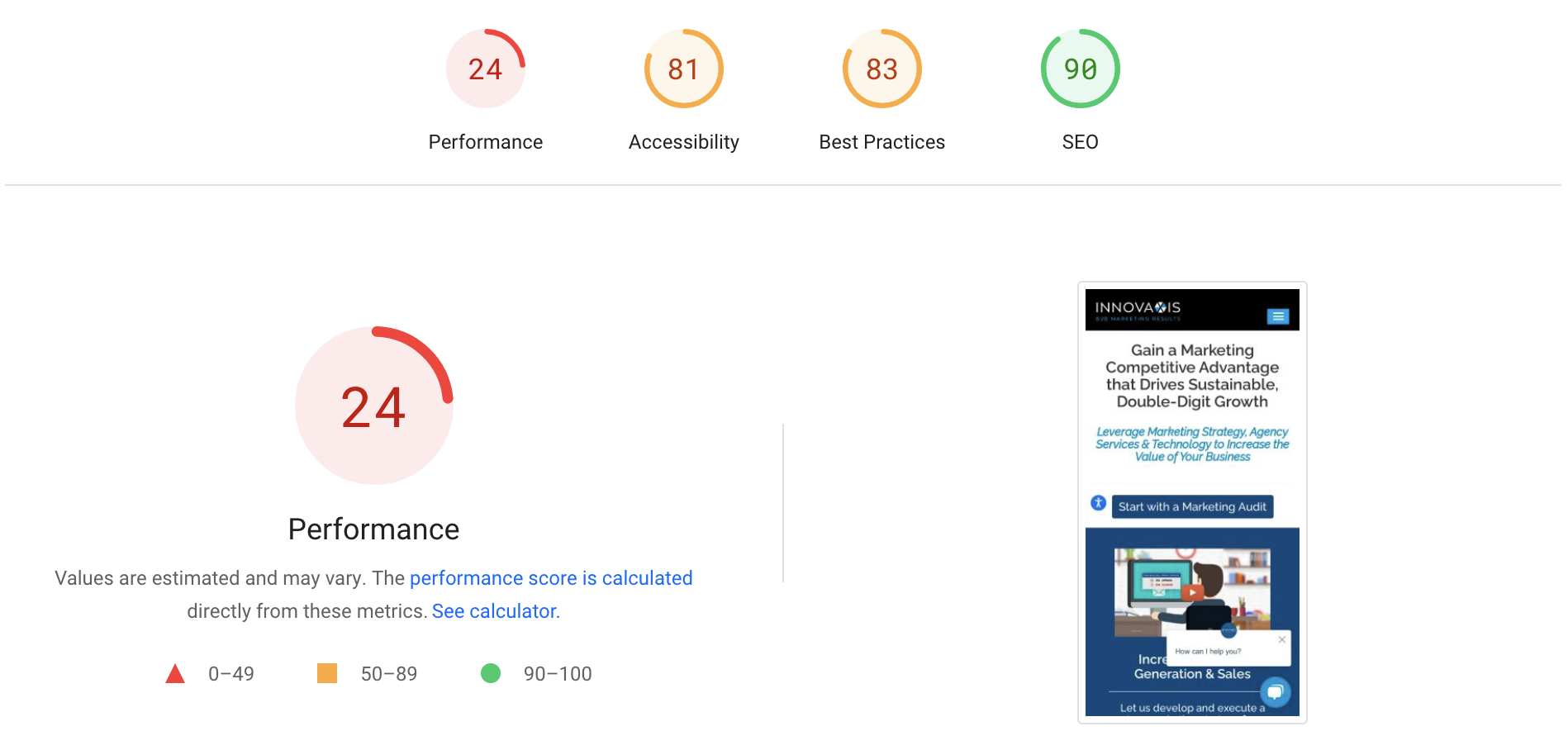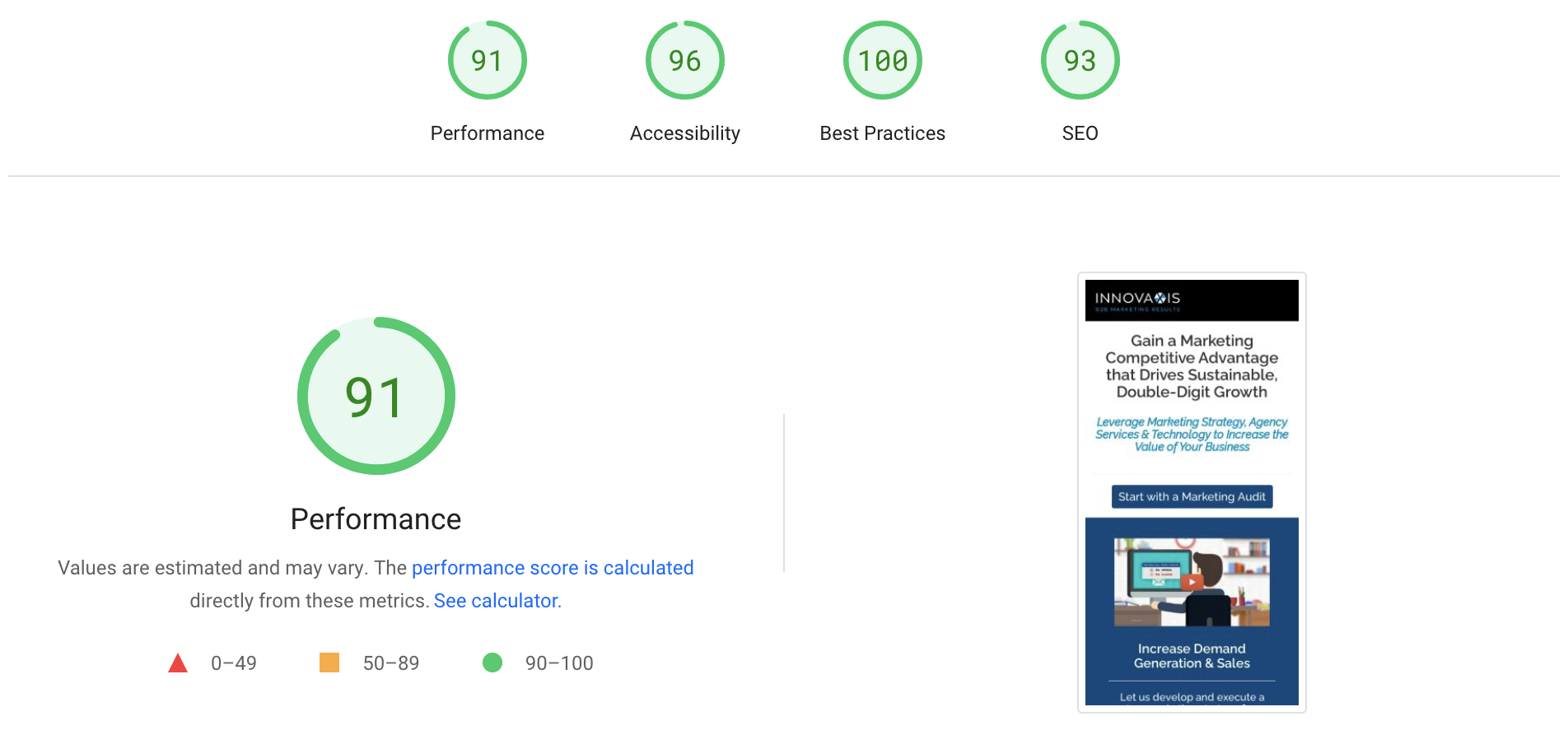NitroPack: The Hidden Gem of Speed Optimization Plugins
Need help implementing NitroPack on WordPress or Magento? Innovaxis Marketing is a NitroPack agency partner – contact us for help

Now that Google has added Core Web Vitals and page speed to its search ranking algorithm, WordPress site owners have been wondering: how can I make my website faster and my user experience better?
WordPress sites are notoriously slow with Google PageSpeed often <20 out of 100. Infinite plugins that each have their own bundle of files, especially JavaScript, are a big reason why your site may experience less-than-optimal site speeds.
Enter NitroPack: a WordPress plugin with powerful speed optimization capabilities. With NitroPack activated, Google PageSpeed scores on desktop and mobile can now reach 90+ out of 100, the largest increases we have ever seen with an optimization plugin (sorry WP Rocket and Lazy Load). Google’s FCP, or First Contentful Paint, is also frequently brought to under 1.8 seconds, the benchmark for a good score.
Below is an example of the change in Google PageSpeed’s score of our website.
Before NitroPack

After NitroPack

How Does NitroPack Work?
NitroPack works by tackling the two main issues that negatively affect page speed: large amounts of page elements and hefty JavaScript execution. It does this using several features.
Caching
Many optimization plugins also cache web pages to help increase site speed, so what makes NitroPack different? If you have used a plugin that caches your site, you may know that it can sometimes be a hassle to make sure your users are always seeing the most up-to-date content on your site. However, NitroPack has features like smart invalidation and automatic cache warmup that make it easy to update your content while keeping your site optimized.
Additionally, NitroPack allows you to clear the cache of individual pages, using significantly less CDN bandwidth than would be needed if you were to clear your entire site’s cache. This allows many sites to operate using the free optimization plan from NitroPack at 1GB of CDN per month.

Image & Video Optimization
Not only does NitroPack automatically lazy load images, videos and iFrames, but it also converts your images to WebP on supported browsers. WebP is the newest image format that offers a smaller file size with the same level of quality.
JavaScript Optimization
JavaScript is a major contributor in slowing down a website. NitroPack supports JS minification and compression, as well as deferred loading. This is especially helpful for elements of your site that move, like sliding banners, animations, etc. While NitroPack is a quick way to increase your site speed, the JS optimization often needs some quality control and adjustment to make sure page elements load correctly for users.
CSS & HTML Optimization
NitroPack supports CSS and HTML minification and compression. Most importantly, it supports above-the-fold critical CSS, meaning that it puts the CSS of your above-the-fold content in the <head> tag so that it loads quicker.
Built-in CDN
NitroPack has its own built-in content delivery network (CDN) that allows your site to serve resources to users quicker. The CDN works to save cached versions of your website in multiple geographical locations so that the data does not have to travel far to get delivered to the user. This works to speed up your site and increase your Google PageSpeed score.
Configuration Is Key
Like with any optimization plugin, NitroPack can affect the way your site operates. That’s why configuration of plugin settings and performing QC on your site to account for changes are key to making NitroPack’s optimization as seamless as possible.
JS, CSS and HTML optimization can cause formatting issues on your site, so it’s important to implement NitroPack on a staged version of your site that you thoroughly QC before launching it on your live site. In our experience, NitroPack has had minimal effect on site layout, especially in comparison to other optimization plugins, such as WP Rocket.
Deferring JavaScript execution can also affect the loading of your Google Analytics tracking code. To avoid any issues with your tracking and reporting, make sure that the site tag script has been excluded from optimization. You can do this by adding these parameters to the Excluded Resources within Settings on the NitroPack dashboard:
*googletagmanager*
*analytics.js*
*UA-*Is NitroPack “Cheating”?
You may be thinking, “Well, that sounds a little too good to be true.” And that was our first response. When your PageSpeed score shoots up to the high 90s within minutes, it’s easy to assume NitroPack is somehow tricking the Google PageSpeed system. However, we found that this is not the case. All the features mentioned above play a part in making your site faster and, combined, make a big difference in page speed.
There are also people who say that deferring JavaScript execution is “cheating.” NitroPack is not hiding any files or serving blank pages to Lighthouse, Google’s automated page experience testing tool. It simply defers JavaScript execution until the user interacts with the page. This means that your site’s JS code still fully loads and renders for your users but is deferred so that critical elements of your site can load faster.
Give NitroPack a Shot
Your site speed needs to be addressed if you want to maintain or increase your organic search rankings. If you don’t, visitors may not wait around for your site to load and your keyword rankings could plummet if competitor sites display much faster.
With its user-friendly dashboard and configurable optimization options to fit your site’s specific needs, NitroPack makes tackling page speed a whole lot easier. Contact us if you’d like an authorized agency partner to help.
Get 5% off NitroPack paid plans using coupon code “INNOVAXIS” here
Learn more about increasing your site speed & improving organic rankings